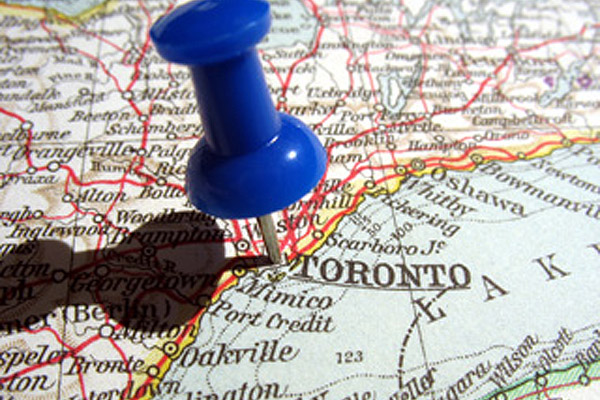Toronto's house price boom spreads to suburbia
4/24/2015
| SHARE
Posted in GTA Real Estate by Vanguard Realty | Back to Main Blog Page

Bidding wars have spread beyond the boundaries of Toronto’s core to the 905, Globe Real Estate’s home value survey confirms.
Real estate agents have been passing along anecdotes about the spirited competition taking place in parts of the Greater Toronto Area that, in the past, had lots of houses to choose from.
John Pasalis, president of Realosophy Realty Inc., says the data have revealed some surprisingly hot pockets in Oakville, Thornhill and Durham region, for example.
“It’s pretty clear this isn’t a Toronto phenomenon.”
Mr. Pasalis says contests are also taking place in all segments of the market up to and even past the $2-million mark. A lot of people seem to think that only first-time buyers get drawn into multiple offers, he says, but that’s no longer the case.
“I don’t think people realize the demand is everywhere.”
The spring survey of home values, tailored exclusively for Globe Real Estate by Realosophy, shows that prices jumped about 8 per cent in the GTA in the first quarter compared with the same period in 2014.
The survey of market values expanded this year to include a larger swath of the Greater Toronto Area.
To gauge the temperature of a market, Mr. Pasalis looks at such factors as price growth, sales growth, average days on market and the selling price compared with the listing price.
Mr. Pasalis says it’s common these days to see buyers competing over real estate in areas well beyond the core. In Durham, for example, parts of Bowmanville, Pickering, Ajax, Whitby, Oshawa and Clarington are popular.
The Centennial neighbourhood, for example, saw the average price jump 26 per cent to $347,593 from $275,962. Days on market dipped to 13 from 18. In the niche known as Southwest Ajax, the average price rose 23 per cent to $370,417 from $300,082. Days on market dropped to 18 from 26. And in Dunbarton, the average price swelled 38 per cent to $838,375 from $608,167. Days on market increased in that area to 30 from 18.
Mr. Pasalis says numbers are sometimes skewed in a particular area if the housing stock shifts with the completion of a new condo building or sub-division. In luxury neighbourhoods where fewer houses change hands, large swings can occur in either direction if a very high-priced property sold in one of the quarters.
Mr. Pasalis knows that competition is likely breaking out in particular pockets when he sees houses selling for the full asking price or above.
In Toronto, he points out, competition is often the norm for a single family dwelling.
“It seems everything gets bidding wars – even the really dumpy ones,” Pasalis said.
At richer prices – between $1.5-million and $2-million for example – houses will sit a little longer in the suburbs. In the 416, houses in that range also draw multiple bidders.
A property within walking distance of a subway station tends to be the most likely to create a mania.
“The second you’re off the subway, it tends to stay on the market a little longer,” Pasalis said.
Some hot neighbourhoods include Banbury, which saw the average price gain 42 per cent; Victoria Village, with a 29-per-cent jump and Bayview Woods, which rose 23 per cent.
Buyers have been pouring into a slice of the Thornhill region called Royal Orchard. The average price jumped 23 per cent to $720,812 from $585,145 and days on market dropped to 14 from 22. Mr. Pasalis figures house hunters began pushing those prices up after they were priced out of other neighbourhoods nearby.
“It’s a somewhat affordable pocket,” he says.
Similarly, River Oaks is a less pricey area of Oakville compared with the historic downtown. The average price rose 20 per cent in River Oaks to $736,776 from $613,720.
Mr. Pasalis says a lot of the houses were built in the 1980s and 1990s so they are not as cherished as the heritage homes or as coveted by the group that prefers brand new.
“They usually don’t show as well,” he says. “The appliances are white. Fifteen years ago people weren’t as obsessed with stainless steel.”
Some areas have seen jumps because smaller houses are being torn down and replaced with larger ones.
Meanwhile, the real estate brokerage TheRedPin.com has deemed May 1 the best day to list a home for sale. Earlier this year TheRedPin pegged the third Tuesday in January as the cheapest day of the year to buy a house.
Now it has crunched five years worth of numbers and found that between 2010 and 2014, homes sold for $18,650 higher in May than the average for the calendar year.
A typical house in Toronto sells in 21 days during the spring market so TheRedPin figures that listing May 1 gives sellers the optimal amount of time to make a sale.
Ajax, Durham, Oshawa Real Estate, Pickering, Real Estate, Real Estate Market, Real Estate News, Toronto Real Estate

Thinking of buying or selling a property, or have a question regarding the real estate market? Fill out the form below and we'll get back to you promptly.
